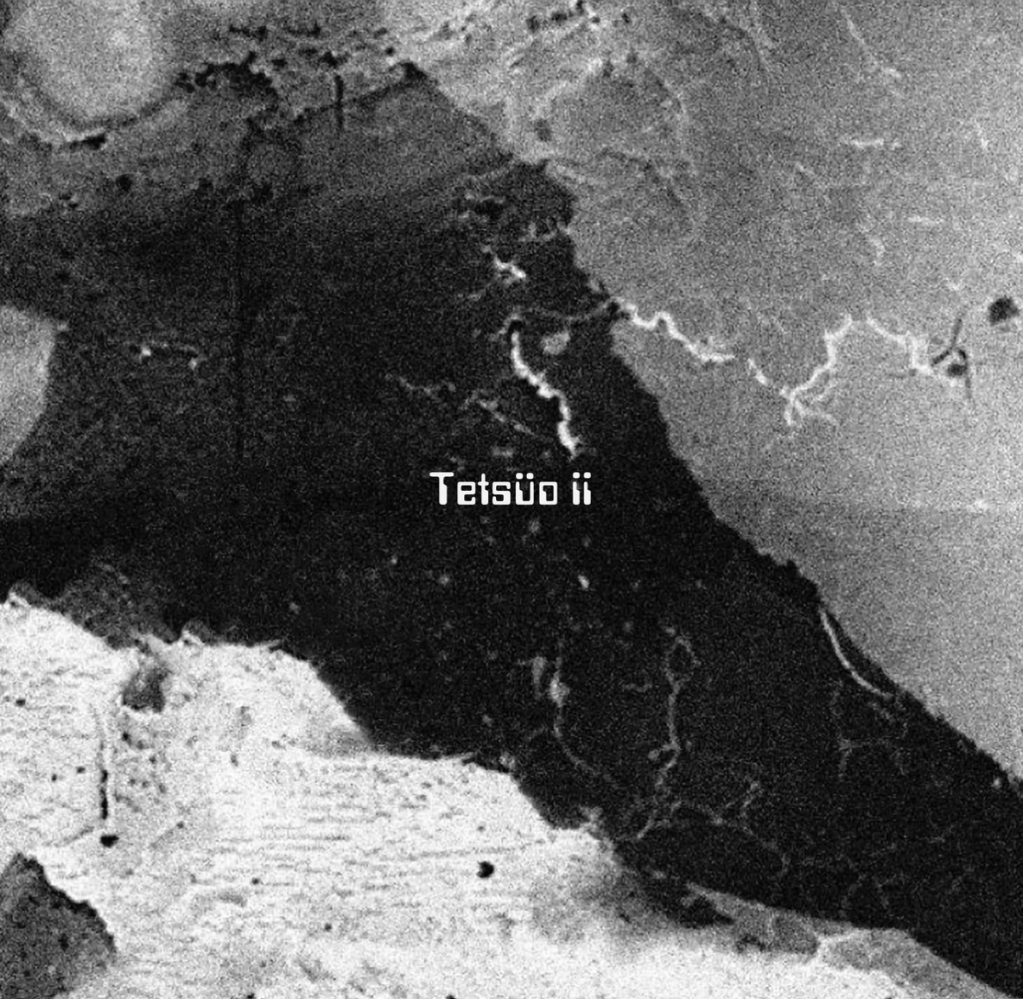Our Daily Bread 599: Tetsüo ii ‘S-T’
November 6, 2023
AN ALBUM PURVIEW BY ANDREW C. KIDD

Tetsüo ii ‘Tetsüo ii’
(Dagger Forest)
The London-based tape label Dagger Forests boasts “sounds of dreaming and nightmares, dark and pop”. Theirs is an eclectic library of sound: vaporwave (Odours『香水』, July 2015); footwork (the track I Am, If You Want Me To Be on Heaven’s Night by Edith Underground, December 2022); and, witchhouse (Haunted by PVNDV, released in August 2023). The 2014 promo is a fine listen: the wonderful TUUTH – Fake Flowers (Draft 2) echoes the finest microhouse of DJ Koze and Gold Panda.
One half of Tetsüo ii is Dave Duval, also one half of, alongside Scott Nemeth, Zeit. His cryptic, often medieval-themed artwork beguiles; he references the gothic on his track Carmilla (ZEIT collection, released on NB Noise Brigade in July 2018). The other half is Scott Saad, a.k.a. Void Ant. The colourful Roswell aliens (some hooded, others revealed) on his cover art since 2015 are entertaining. Has the duo’s nom de guerre been borrowed from Tsukamoto’s Tetsuo science fiction horror flicks (Tetsuo: The Iron Man in 1989 and Tetsuo II: Body Hammer in 1992)?
From the droning litheness of the opener, Spectral Return, which ascends in a cycle of forever-sustain, to the pulsing repetitiveness of Charades, the self-titled album of Tetsüo ii is abstract. It is also exoteric: the motif from Spectral Return recurs at regular intervals throughout the LP, and somewhat less lithely on Spectral Return (Reprise), which – in a manner not too dissimilar to Kubrick’s 2001: A Space Odyssey and the sequential menace of Strauss’s Also sprach Zarathustra – decomposes. Blurry vocals enter on this reprise. Zaps pass by distantly. There is modulation, which oozes harmony and bleeds discordantly. We hear the motif again in Colors of the Dark, which I make further reference to later.
Lament plays out into a large glass bowl: the reverberation-less Vangelis synths matt against the steely and charcoal-grey drones that echo away in descent. The modular-style synths of Wight play in harmony as if some giant cosmic organ pipes out its flourishes and metallic embellishments. Again, there is clever use of repetition; there are few notes, but each contribute. There is a now signature diminuendo.
I will interject at this juncture to highlight my main criticism of Tetsüo ii: the curtailment of some of its pieces. Take Charades: the duo expand their sonic repertoire with a downtempo stock beat drumming in the background; the hi-hat taps are increasingly intricate; the narrative has only really taken fruition, when, all of a sudden – it stops. This is less of an issue on Slough* which is short but achieves totality. This same completeness plays out on In Space There is No Law. White-noise pulsations cut in and out like thrusters of a spaceship making its final approach to dock. Subtle sounds clamour like metal. A keyed melody twinkles. Its outro chimes.
Colors of the Dark is the penultimate piece on the LP. It is a speculative minor masterwork. As the motif from Spectral Return is reprised, I am a passenger in deep space considering what colours constitute darkness. Darkness: the absence of illumination. Yet, this track is far from being light-doused. Its ambient drones lift the listener. It is thematically cosmic. Red shifts appear. Blinking starlight is referential. Across its length of 16-minutes, synth layers build and expand. There are discordant moments such as low-frequency notes (perhaps asteroids striking different planets?). Sustained synths are suspenseful; these prolonged treble-heavy passages offer glimpses into the unknown. The shimmering notes that enter at the 8-minute mark are warm, almost reed-like, breathing out into the swarms of passing synth notes that filter through as muons and anti-muons and neutrinos and other elements that have yet to be discovered and named. The organ-like sounds that cascade after 9-minutes elevate the listener; this disappears to reappear in step-like descent after 12-minutes – this time, a minor key proliferates. Each note progresses through their respective scales, always achieving harmonic balance. It counterbalances the more discordant Wight and In Space There is No Law. Colors of the Dark is devoid of any discernible time signature, which is good – time is only an imagined construct after all. The thrumming notes in the denouement of the piece allude to thrusters being primed in a pre-propulsive state: onwards to vacuity – we who occupy this great vessel are shuddered and jolted in a forward-fling to an even deeper unknown.
Tetsüo ii concludes with Glossolalia (translation: tongue-talking). The tone on this piece is quite different to the rest of the LP. Voices emerge from the counterpoint synths as they did on Spectral Return (Reprise). It is at this point that a perfunctory narrative becomes clear. We emerge from the merging of black holes, a place where all the ancient languages and cultures have been pulled into a place of celestial merging lasting billions of years. The outcome: communicative enlightenment. These were the strange visions I had when listening to Tetsüo ii.
* Did I hear a subtle reference to the late Ryuichi Sakamoto at 1 minute 34 seconds? Perhaps a refrain from Merry Christmas, Mr. Lawrence. I tip my hat to the Tetsüo ii duo if that is the case.
[…] their ‘deep earth’ album, somewhat contrasting their previous ‘deep space’ releases (Tetsüo ii, released by Dagger Forest, and !!, self released, both in October 2023). Menagerie ends with […]